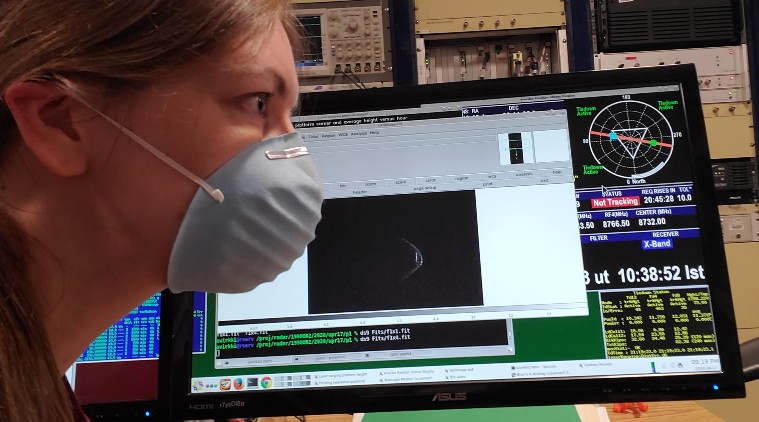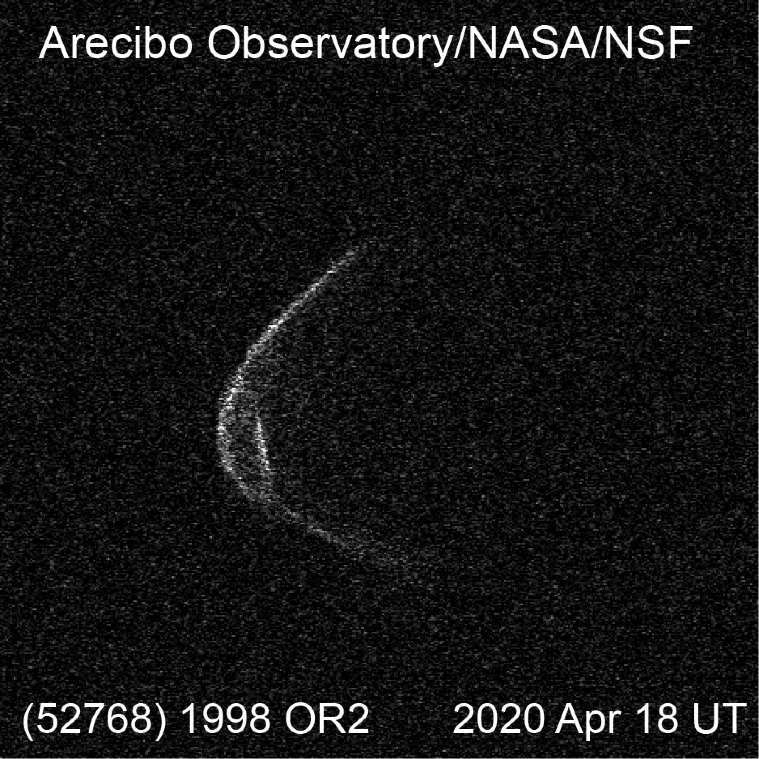 Anne Virkki, head of Planetary Radar at the Arecibo Observatory and asteroid 1998 OR2 pose with their masks. (Image: Arecibo Observatory)
Anne Virkki, head of Planetary Radar at the Arecibo Observatory and asteroid 1998 OR2 pose with their masks. (Image: Arecibo Observatory)
An asteroid, named 1998 OR2, is scheduled to pass by Earth tomorrow on April 29 at a distance of 6.2 million kilometres. Even though the asteroid is in a special class of near-Earth asteroid called Potentially Hazardous Objects (PHOs), the Arecibo Observatory in Puerto Rico confirmed that it poses no threat to the planet.
The observatory started observing the asteroid on April 13 and kept an eye on it until April 23, after which it was no longer visible from the facility. Arecibo confirmed that the space rock is 2 km in diameter and rotates once every 4.1 hours. It will safely fly by Earth on April 29 at its closest approach being 16 times further than the Moon.
The PHOs are classified as space rocks that are bigger than 140 metres and come within 8 million kilometres of Earth’s orbit. At the moment, no known PHO poses an immediate danger to Earth but scientists keep an eye their future trajectories to determine the risk.
 A team at the Arecibo Observatory in Puerto Rico took this range-Doppler radar image of Asteroid 1998OR2 on April 17. (Image: Arecibo Observatory)
A team at the Arecibo Observatory in Puerto Rico took this range-Doppler radar image of Asteroid 1998OR2 on April 17. (Image: Arecibo Observatory)
“The radar measurements allow us to know more precisely where the asteroid will be in the future, including its future close approaches to Earth,” Flaviane Venditti, a research scientist at the Arecibo Observatory said.
#TeamRadar and the @NAICobservatory staff are taking the proper safety measures as we continue observations. This week we have been observing near-Earth asteroid 1998 OR2, which looks like it’s wearing a mask! It’s at least 1.5 km across and is passing 16 lunar distances away! pic.twitter.com/X2mQJCT2Qg
— Arecibo Radar (@AreciboRadar) April 18, 2020
“In 2079, asteroid 1998 OR2 will pass Earth about 3.5 times closer than it will this year, so it is important to know its orbit precisely,” she added.
Express Tech is now on Telegram. Click here to join our channel (@expresstechnology) and stay updated with the latest tech news
The observatory also captured the image of the 1998 OR2 and it features make it look like it is wearing a mask, said Anne Virkki, the head of Planetary Radar at Arecibo. “The small-scale topographic features such as hills and ridges on one end of asteroid 1998 OR2 are fascinating scientifically,” she added.